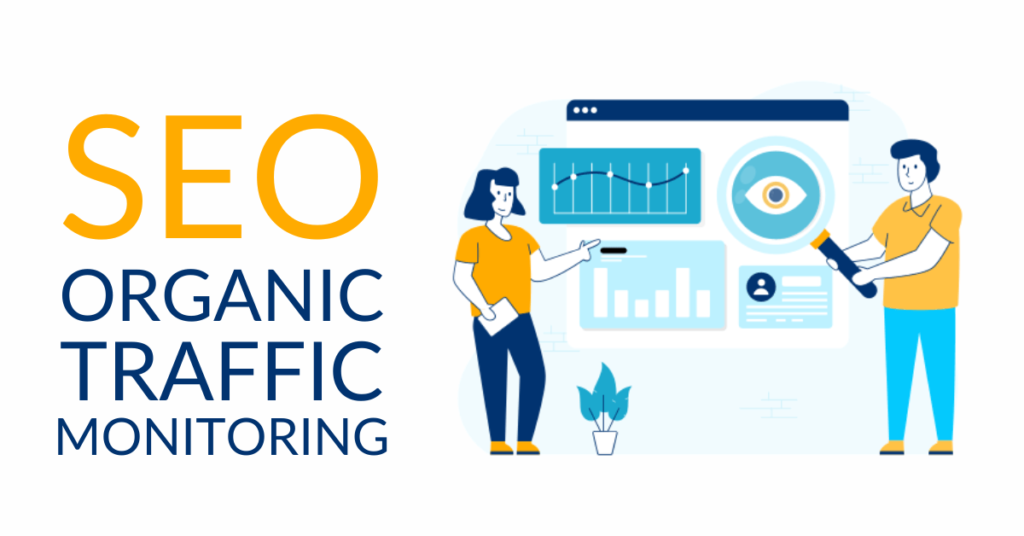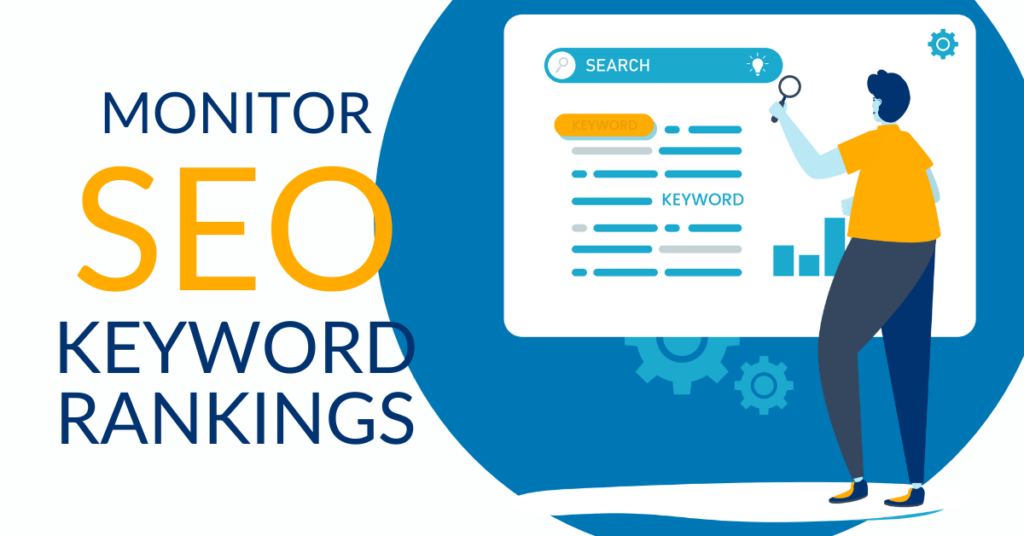What makes a great SEO? Can you track the effectiveness of your efforts? The simple answer is yes. Keyword rankings are still important, but there are many more metrics you should be tracking.
It can be hard to decide which Search Engine Optimization metrics are most important or valuable. You could just focus on the traffic, because that’s probably why you started doing SEO in the first place. But it’s not that simple. I’ll give you 8 key SEO metrics to track, that will make your job easier, and help you measure the effectiveness of your strategy and tactics.
Are you ready to get started? Let’s go then!
1. Organic traffic
The main goal of any SEO strategy is to improve your visibility in search for keywords related to your business and industry — and it stands to reason that if you’re succeeding, the number of visitors you attract from search results should steadily increase.
One of the most important metrics for measuring SEO results is organic traffic.
That’s because this number represents all of the visitors your site is attracting solely from organic search.
So while your overall traffic numbers can give you an idea of your site’s general performance, narrowing in on organic traffic is a better way to measure your SEO strategy’s direct impact. After all, one of the main goals of any SEO strategy is to improve your visibility in search for keywords related to your business and industry — and it stands to reason that if you’re succeeding, the number of visitors you attract from search results should steadily increase.
And accessing this information is easy in Google Analytics.
You can get started by navigating to Acquisition > Overview, then selecting “Organic Search.” By default, this report will show your site’s organic traffic for the previous month. You can see your total number of sessions, as well as how that number fluctuated over the course of the month.
You can also adjust the time frame to get a more comprehensive look at your organic traffic performance over time so that you can see whether it’s reflective of your SEO efforts.
And as you build on your strategy, month-over-month and year-over-year reports are a great way to visualize the long-term impact your SEO has on your site.

2. Organic Click-through rate (CTR)
What is organic click-through rate (CTR)?
Your organic click-through rate shows the percentage of people who visit your website after stumbling upon your web pages in the SERPs. So if 1,000 searchers see your page listing in the search results and 100 people click through to your website, your CTR for that page is 10%.
Organic CTR shows how well your listing (with the title, meta description, and URL) appeals to your audience and how well it manages to catch their attention.
If your CTR is low, it may mean your title or meta description is not engaging, or the content isn’t relevant to what the user is looking for. Here are some ways to improve your organic CTR:
You can monitor CTR directly in Google Search Console under the “Performance” tab.
View CTR by page, query, or device. In particular, monitoring CTR by page provides valuable insights as to which content isn’t bringing in sufficient click-throughs via SERPs..
3. Bounce rate
According to crazyegg,when a visitor lands on a page on your site, then leaves without continuing to another page, this is called a “bounce.”
The percentage of visitors who do this, then, is known as your “bounce rate.”
And it’s a great indicator of whether your site’s content is in line with what users expect when they choose one of your pages from the list of search results.
If a large percentage of your visitors opts to leave your site and choose a different page from the results, this tells you that the page they’re landing on doesn’t contain the information that they wanted or needed.
But if your bounce rate remains low, you can be confident that your pages ranking in search are effective in providing what your visitors want — and that those pages are helping you reach your SEO goals.
4. Search Engine Visibility

Search engine visibility indicates how often your domain is shown in search results for the keywords it’s ranking for.
Tracking search visibility, you can see the positive dynamics even before your site starts attracting visitors. This score can be a key driver for all your SEO-based activity. Search engine visibility score is extremely useful if you want to monitor the early results of website optimization.
To track the visibility dynamics, you can go with Google Search Console:
In the Performance report, you’ll see the Total impressions score. Every time a user comes to the search results page that contains your URL, an impression is recorded.
The impressions are divided by an average position and multiplied by 100, which gives us a percentage of how many times our URL has been shown in search results for specific keywords during a certain period of time (day/month/year).
5. Average session duration
How much time do your visitors usually spend on your website? Do you engage them to stay longer? Average session duration is a prominent metrics you should consider to measure the user engagement on your website, as Smartinsights correctly mentions.
Monitoring session duration, you’ll be able to assess the quality of your site and understand whether you need to implement any changes into your site structure.
To have a longer session duration, you should build an in-depth content structure: internal linking, breadcrumbs, hamburger menus, etc.
6. Keyword Ranking
Keyword ranking shows where the website is ranked in search for a specific keyword. As long as you keep track of keywords that are relevant to your business by monitoring keyword rankings in connection with your focus pages, you can evaluate the effectiveness of the current SEO strategy.
If other metrics improve, but you do not see any progression in target keyword rankings, it might mean that the website has poor keyword selection and you should select less competitive keywords. However, there can be many other reasons.
You can use Google Search Console to monitor keyword rankings. This is a free tool provided by Google which provides information on how websites rank in search results for specific keywords. It also provides additional information such as impressions and click through rates (CTR) for each keyword, as well as data on which sources are providing traffic to your site..

7. Average Page Load Time
There are many reasons why your site speed is important for SEO. Here is one of the most common:
Your site speed is a pivotal SEO ranking factor (for both desktop and mobile) and can make or break your rankings (and user experience).
The average page load time is the time taken to display the full content on a page. You can find this metric under “Behavior” > “Site Speed”. You can then see your average load time for all pages, or check the times for individual pages.
Slow page load times have been shown to negatively impact user experience significantly (by up to 20%). This in turn impacts conversions and leads to lower revenue for ecommerce sites. On top of that, if your website takes too long to load, Google might not even show it in search results due to their recent mobile-first indexing algorithm update.
8. Mobile Traffic and Rankings
The last key metric to track is mobile traffic and rankings. The world is moving towards mobile-first, and as we all know, Google has been following this trend as well.
Google announced that starting January 2019, it will be prioritizing mobile-friendly websites in its mobile search results. Now, this might not seem like such a big deal – after all, what exactly is a “mobile-friendly website”? But here is the thing: Google defines mobile-friendliness by how well your site is displayed on a smartphone or tablet. So if you have a responsive website (one that resizes itself to fit any screen size), then you already pass this test. However, there are other factors that go into making a website mobile friendly – and we will discuss them further down in our article.
The reason behind this update by Google is simple: The number of people using smartphones has increased dramatically over the years (3.6 billion users as of 2020). Naturally, when there are so many people browsing through their mobile phones or tablets, it only makes sense for companies to optimize their websites for those devices too
Conclusion
In this article, we talked about the 8 key SEO metrics to track in order for your business to rank higher.
Before you go, I want to offer you something. It is a program with which you can Create A Consistent Flow of Pre-Sold Dream Clients and 10x the Traffic to Your Website through SEO Content Writing.
With SEO content machine, you’ll learn how to:
- Get a consistent flow of pre-sold dream clients who are attracted to you time and again
- Spend less time creating and more time working with dream clients
- Be seen as THE expert in your industry and build your brand authority
- Multiply your content creation efforts to create more streams of organic traffic
- Make more income and impact
You can read more about it here.
Now, I’d love to hear from you.
Have you ever tracked any of these metrics?
I want to know about your journey. Let me know in the comments below and as always feel free to contact me!






0 Comments